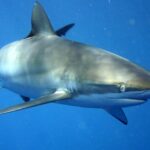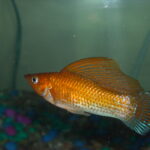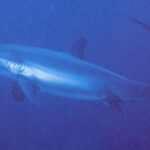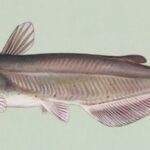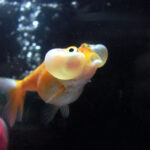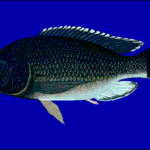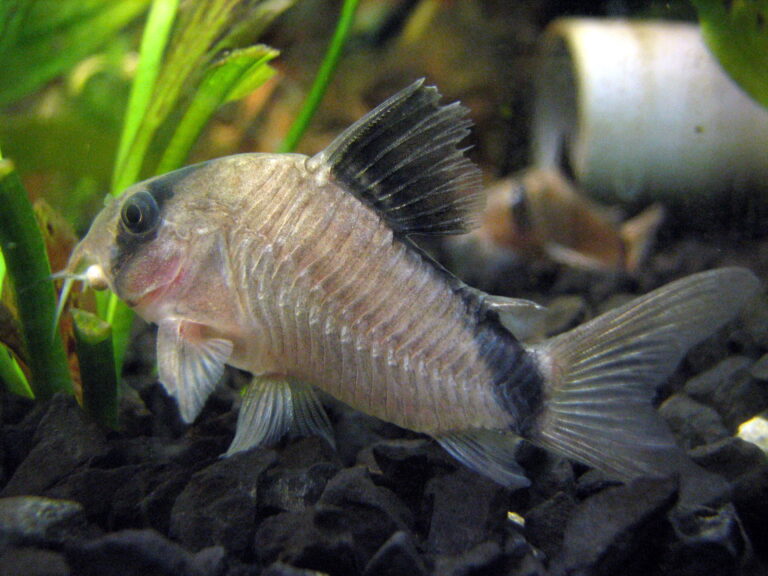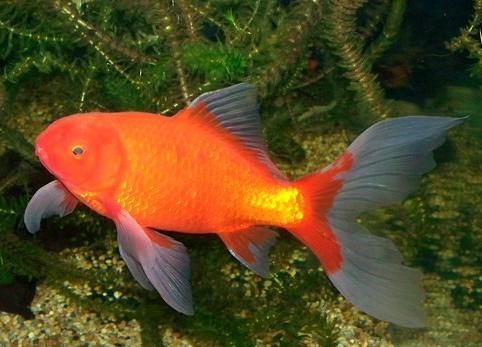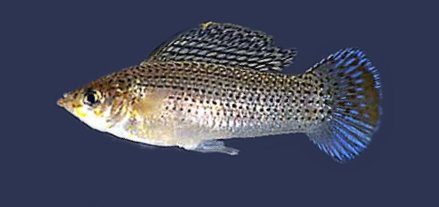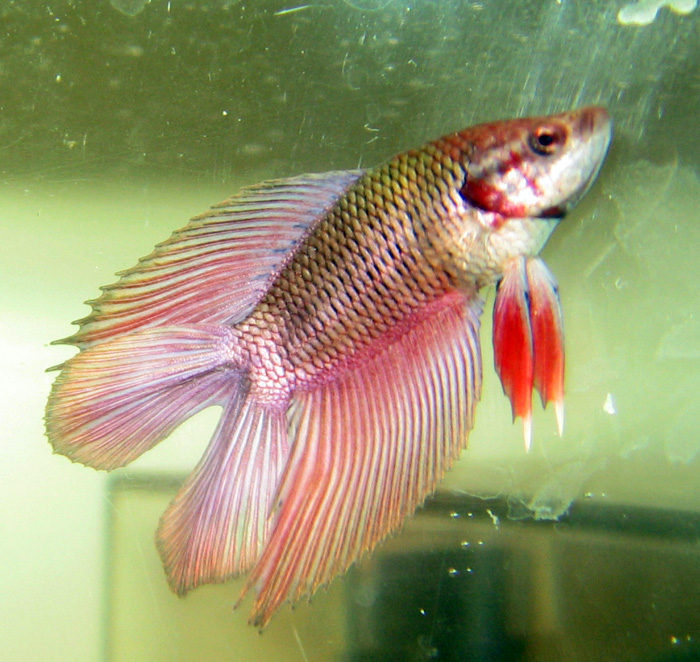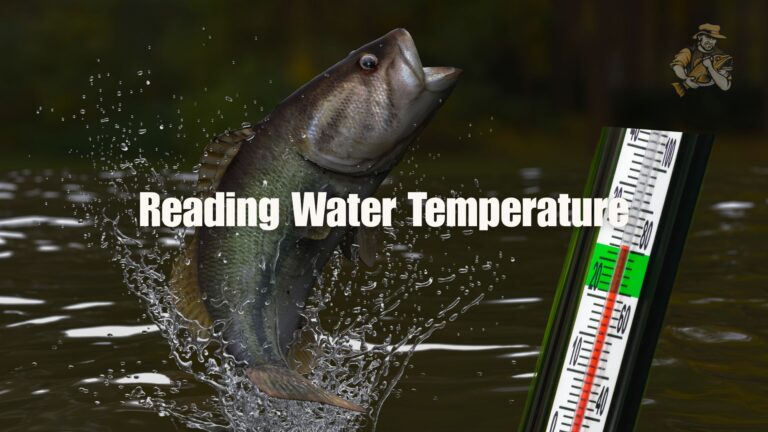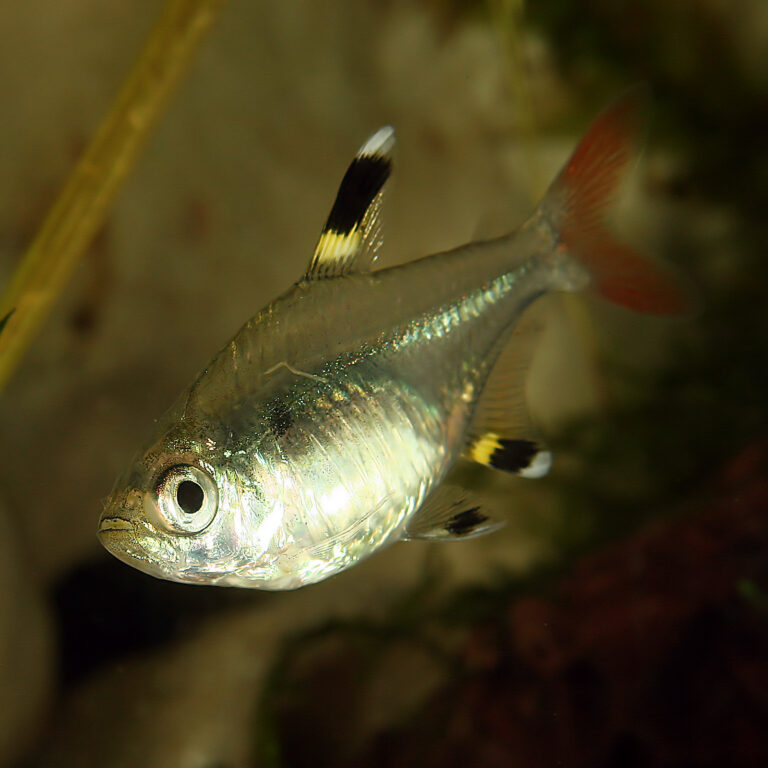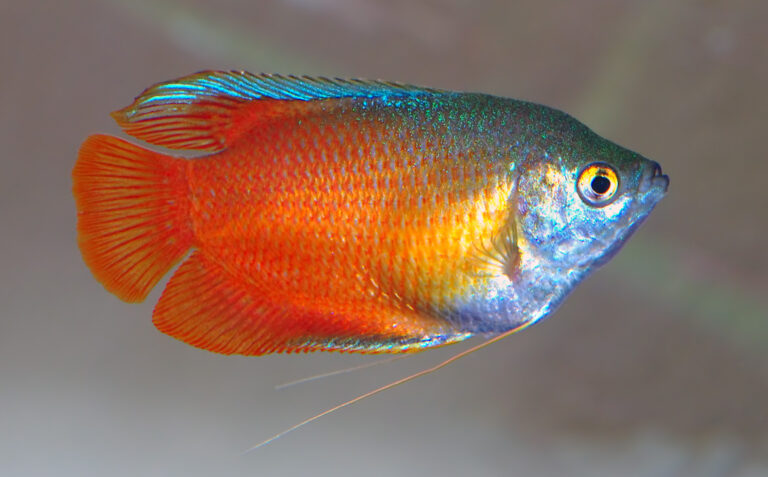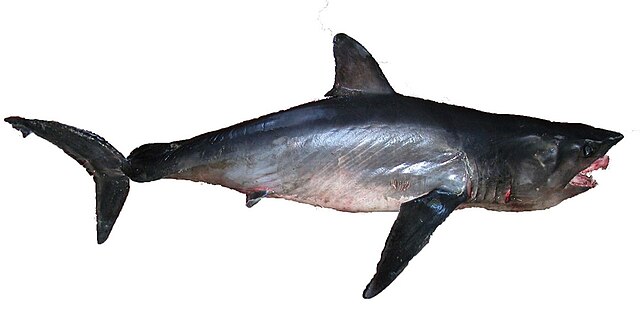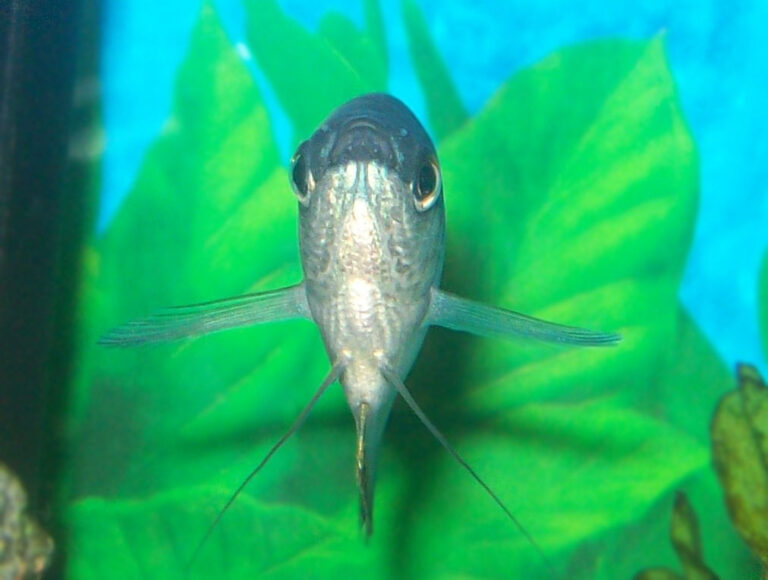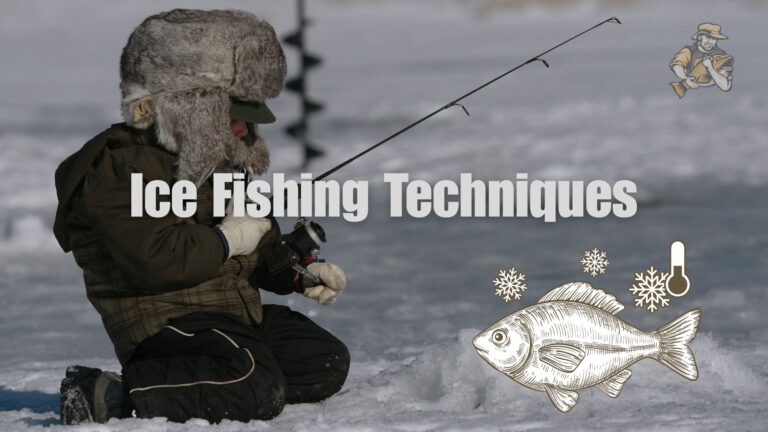Shubunkin Goldfish
By Ryan Maron | Last Modified: June 18, 2025
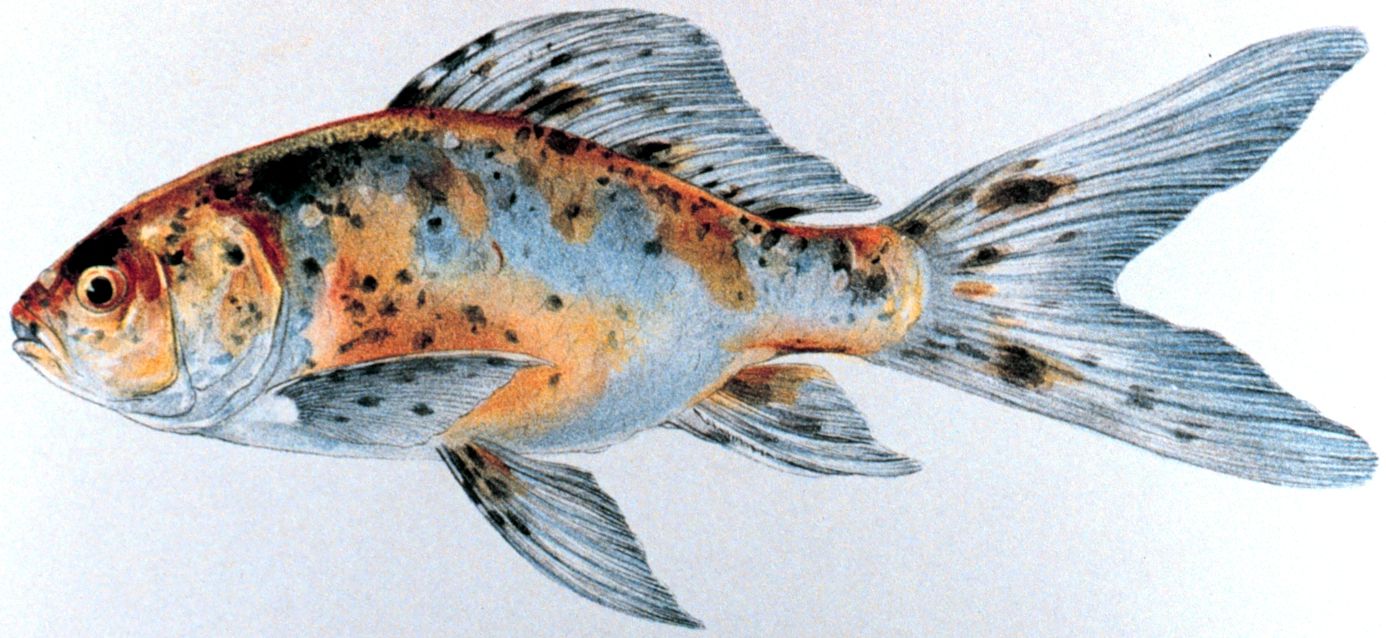
The Shubunkin Goldfish (Carassius auratus) represents one of the most popular and visually striking varieties of goldfish kept in aquariums and outdoor ponds worldwide. Originally developed in Japan during the late 19th century, this hardy cyprinid species displays a distinctive calico pattern that sets it apart from other goldfish varieties. The Shubunkin Goldfish plays a significant ecological role in aquatic ecosystems as both a consumer of aquatic vegetation and invertebrates, while serving as prey for larger predatory fish species. In captive environments, these fish have become essential components of the ornamental fish trade, contributing millions of dollars annually to the global aquarium industry. Their adaptability to various water conditions and temperatures makes them valuable indicators of ecosystem health in both natural and artificial aquatic habitats.
| Feature | Details |
| Common Name | Shubunkin Goldfish |
| Scientific Name | Carassius auratus |
| Family | Cyprinidae |
| Typical Size | 15-25 cm (6-10 inches), 200-400 grams |
| Habitat | Freshwater ponds, slow-moving streams |
| Diet | Omnivorous |
| Distribution | Global (introduced species) |
| Conservation Status | Least Concern |
Taxonomy & Classification
The Shubunkin Goldfish belongs to the family Cyprinidae, which encompasses over 3,000 species of freshwater fish commonly known as carps and minnows. Within this extensive family, Carassius auratus represents the taxonomic foundation for all goldfish varieties, including the Shubunkin strain. The species was first scientifically described by Carl Linnaeus in 1758, establishing its binomial nomenclature that remains valid today.
Taxonomically, the Shubunkin Goldfish classification follows this hierarchy: Kingdom Animalia, Phylum Chordata, Class Actinopterygii, Order Cypriniformes, Family Cyprinidae, Genus Carassius, and Species C. auratus. The Shubunkin represents a selectively bred variety rather than a distinct subspecies, sharing identical genetic markers with other goldfish cultivars. Modern molecular analysis confirms that all goldfish varieties, including Shubunkins, descended from the Prussian carp (Carassius gibelio) through centuries of selective breeding practices.
Three primary Shubunkin varieties exist within the ornamental fish trade: London Shubunkin, Bristol Shubunkin, and American Shubunkin. Each variety displays distinct morphological characteristics, particularly in fin structure and body conformation. The London Shubunkin maintains the classic goldfish body shape with shorter fins, while Bristol Shubunkins exhibit dramatically enlarged, rounded caudal fins. American Shubunkins typically display intermediate characteristics between these two primary forms.
Physical Description
The Shubunkin Goldfish exhibits a distinctive calico coloration pattern that distinguishes it from other goldfish varieties. This striking appearance results from a combination of metallic and nacreous scales that create a mottled effect across the fish’s body surface. Typical coloration includes patches of blue, red, orange, yellow, black, and white distributed in random patterns that make each individual specimen unique. The blue coloration, particularly prized among aquarists, derives from specialized chromatophores that reflect light wavelengths differently than standard goldfish pigmentation.
Adult Shubunkin Goldfish typically reach lengths between 15 and 25 centimeters, with exceptional specimens occasionally exceeding 30 centimeters in optimal conditions. Body weight ranges from 200 to 400 grams for mature individuals, though pond-raised specimens frequently achieve larger sizes than their aquarium-kept counterparts. The species maintains the characteristic cyprinid body plan with a laterally compressed form, though selective breeding has produced variations in proportional relationships between body depth and length.
Fin morphology varies significantly among Shubunkin varieties. London Shubunkins possess relatively short, rounded fins that maintain functionality for active swimming. Bristol Shubunkins display dramatically enlarged caudal fins that can span nearly the full body length, creating spectacular visual displays but potentially compromising swimming efficiency. The dorsal fin typically contains 15-19 rays, while the anal fin features 5-6 rays. Pectoral and pelvic fins remain proportionally consistent across varieties, serving essential roles in maneuvering and stability.
Scale patterns follow the standard goldfish arrangement with lateral line counts typically ranging from 27 to 31 scales. The combination of metallic and nacreous scale types creates the characteristic Shubunkin appearance, with nacreous scales producing the iridescent blue coloration that defines high-quality specimens.
Habitat & Distribution
Shubunkin Goldfish demonstrate remarkable adaptability to diverse freshwater environments, thriving in both natural and artificial aquatic systems worldwide. Originally developed for ornamental purposes in Japanese and Chinese aquaculture, these fish have successfully established populations across multiple continents through both intentional introduction and accidental release. Their preferred habitats include slow-moving rivers, ponds, lakes, and extensively managed aquaculture facilities where water temperatures remain within tolerable ranges.
Temperature tolerance represents one of the Shubunkin Goldfish’s most significant adaptive advantages. These fish survive in water temperatures ranging from near-freezing to approximately 35°C (95°F), though optimal growth occurs between 18-22°C (64-72°F). This broad thermal tolerance enables successful establishment in temperate regions across North America, Europe, Asia, and parts of Australia. Seasonal temperature fluctuations trigger behavioral adaptations, including reduced feeding activity and metabolic slowdown during winter months.
Water chemistry requirements remain relatively flexible, with Shubunkin Goldfish tolerating pH levels between 6.5 and 8.5. Dissolved oxygen concentrations above 4 mg/L support healthy populations, though these fish can survive temporary reductions to 2 mg/L through behavioral modifications. Salinity tolerance extends to approximately 10 parts per thousand, allowing survival in slightly brackish conditions though reproduction success decreases significantly in elevated salinity environments.
Depth preferences vary based on environmental conditions and life stage. Juvenile Shubunkin Goldfish typically inhabit shallow areas with abundant vegetation cover, while adults utilize both shallow and deeper zones depending on seasonal factors. During spawning periods, adults concentrate in shallow areas with suitable substrate for egg deposition. Winter survival often depends on access to deeper water zones that maintain stable temperatures above critical thresholds.
Diet & Feeding Behavior
The Shubunkin Goldfish exhibits omnivorous feeding behavior with dietary preferences that shift based on seasonal availability and environmental conditions. Natural feeding patterns include consumption of aquatic vegetation, benthic invertebrates, zooplankton, and organic detritus. This diverse dietary approach contributes significantly to their ecological success across varied habitat types and helps explain their rapid establishment in introduced environments.
Plant matter constitutes approximately 60-70% of the natural Shubunkin Goldfish diet during peak growing seasons. Preferred vegetation includes soft aquatic plants such as Elodea, Cabomba, and various algae species. These fish possess specialized pharyngeal teeth adapted for grinding plant material, enabling efficient processing of cellulose-rich foods. Feeding behavior involves systematic browsing of submerged vegetation, often resulting in significant impacts on aquatic plant communities in established populations.
Invertebrate consumption focuses primarily on chironomid larvae, tubificid worms, small crustaceans, and aquatic insect larvae. Foraging techniques include substrate disruption through digging behaviors that expose buried invertebrates. This feeding strategy can significantly alter benthic community structure and increase water turbidity through sediment resuspension. During peak invertebrate abundance periods, protein intake may comprise up to 40% of total dietary consumption.
Seasonal feeding patterns reflect metabolic adjustments to temperature variations. Active feeding occurs when water temperatures exceed 10°C (50°F), with peak consumption rates observed between 18-25°C (64-77°F). Below 10°C, feeding activity decreases dramatically as metabolic processes slow. This adaptation enables survival through winter months when food availability decreases substantially. Daily feeding patterns typically show increased activity during dawn and dusk periods, though individual variations exist based on environmental pressures and food availability.
Behavior & Adaptations
Shubunkin Goldfish demonstrate complex social behaviors and remarkable physiological adaptations that contribute to their success as both ornamental and naturalized species. Schooling behavior occurs primarily in juvenile stages and during spawning periods, providing protection from predation and enhanced foraging efficiency. Adult individuals may exhibit more solitary tendencies, particularly in resource-limited environments where competition intensifies.
Swimming patterns vary significantly among different Shubunkin varieties based on fin morphology and body conformation. London Shubunkins maintain efficient swimming capabilities with streamlined movement patterns suitable for active foraging and predator avoidance. Bristol Shubunkins, with their enlarged caudal fins, display more graceful but less efficient swimming behaviors that may compromise escape responses but enhance visual appeal in ornamental settings.
Thermal adaptation represents one of the most significant behavioral modifications observed in Shubunkin Goldfish populations. During temperature transitions, these fish adjust metabolic rates, feeding behaviors, and activity levels to maintain homeostasis. Cold adaptation includes behavioral clustering in deeper water zones, reduced movement to conserve energy, and cessation of reproductive activities. Heat stress responses involve seeking cooler microhabitats, increased respiration rates, and modified feeding schedules to avoid peak temperature periods.
Territorial behaviors emerge primarily during breeding seasons when males establish and defend spawning areas. Aggressive interactions include chasing, fin displays, and physical contact to establish dominance hierarchies. Outside breeding periods, territorial behaviors diminish significantly, allowing for more peaceful coexistence in group settings. Environmental enrichment in captive environments can reduce stress-related behaviors and promote natural activity patterns that enhance both health and visual appeal.
Reproduction & Life Cycle
The reproductive cycle of Shubunkin Goldfish follows seasonal patterns closely tied to temperature fluctuations and photoperiod changes. Sexual maturity typically occurs between 12-18 months of age, though environmental conditions significantly influence timing. Males generally mature earlier than females, developing characteristic breeding tubercles on gill covers and pectoral fins during spawning readiness periods.
Spawning behavior initiates when water temperatures reach 16-20°C (61-68°F) and day length increases during spring months. Courtship rituals involve males pursuing females through shallow vegetated areas while displaying vibrant coloration and fin positioning. Males exhibit persistent following behaviors and gentle nudging to encourage females toward suitable spawning substrates. Multiple males may court a single female simultaneously, leading to competitive spawning events.
Egg deposition occurs primarily on aquatic vegetation, artificial spawning media, or suitable substrate surfaces in shallow water areas. Female Shubunkin Goldfish can produce 2,000-4,000 eggs per spawning event, though larger individuals may exceed 10,000 eggs under optimal conditions. Eggs measure approximately 1.2-1.5 millimeters in diameter and display adhesive properties that secure them to spawning substrates. Fertilization success rates typically range from 70-90% under favorable environmental conditions.
Embryonic development progresses rapidly at optimal temperatures, with hatching occurring 4-7 days post-fertilization at 20°C (68°F). Newly hatched larvae measure 4-5 millimeters and possess yolk sacs that provide nutrition for initial development stages. Free-swimming fry emerge after 3-4 days and begin feeding on microscopic organisms including protozoans, rotifers, and small algae. Juvenile coloration develops gradually over several months, with characteristic Shubunkin patterns becoming apparent at 6-12 months of age. Growth rates depend heavily on temperature, food availability, and population density, with individuals potentially reaching adult size within 12-18 months under optimal conditions.
Predators & Threats
Shubunkin Goldfish face predation pressure from diverse aquatic and terrestrial species throughout their life cycle. Egg and larval stages experience the highest predation rates, with numerous invertebrates, amphibians, and fish species consuming developing embryos and newly hatched fry. Primary egg predators include dragonfly nymphs, water beetles, and other goldfish species that exhibit cannibalistic behaviors toward reproductive material.
Juvenile Shubunkin Goldfish encounter predation from larger fish species including bass, pike, and mature cyprinids. Aquatic birds pose significant threats to both juvenile and adult populations, with herons, egrets, and cormorants capable of consuming substantial numbers of fish from shallow water environments. Mammalian predators such as raccoons, otters, and domestic cats contribute to mortality rates, particularly in ornamental pond settings where escape options remain limited.
Adult Shubunkin Goldfish face fewer natural predators due to their size and swimming capabilities, though large predatory fish, birds, and mammals continue to pose threats under specific circumstances. The distinctive coloration patterns that make Shubunkins desirable as ornamental fish may increase predation vulnerability by enhancing visibility to visual predators. This trade-off between aesthetic appeal and survival advantage represents a significant consideration for both wild and captive populations.
Environmental threats include habitat degradation, water pollution, and climate-related stressors that compromise population stability. Chemical contamination from agricultural runoff, urban development, and industrial activities can cause direct mortality or reproductive failure. Temperature extremes associated with climate change may exceed tolerance limits in some regions, potentially restricting distribution ranges. Disease outbreaks, particularly viral and bacterial infections, can devastate dense populations in both natural and artificial environments.
Invasive species interactions create additional challenges where Shubunkin Goldfish populations establish outside their native range. Competition with native species for food resources and spawning habitats can negatively impact ecosystem balance and biodiversity conservation efforts.
Conservation Status
The International Union for Conservation of Nature (IUCN) classifies the goldfish species Carassius auratus, including Shubunkin varieties, as Least Concern due to their widespread distribution and stable population trends. This conservation status reflects the species’ remarkable adaptability and successful establishment across diverse global environments. However, conservation considerations extend beyond simple population numbers to include ecological impacts and biodiversity implications in introduced habitats.
Population monitoring efforts focus primarily on established wild populations where Shubunkin Goldfish may impact native species and ecosystem functions. In many regions, these fish are considered invasive species requiring management interventions to prevent ecological disruption. Control measures include population reduction programs, habitat modification, and prevention of further introductions through public education and regulatory enforcement.
Captive breeding programs maintain genetic diversity within ornamental Shubunkin lines, though commercial emphasis on specific aesthetic traits may reduce overall genetic variability. Selective breeding practices that prioritize extreme physical characteristics, particularly in Bristol Shubunkin varieties, raise welfare concerns regarding swimming ability and survival capacity. Conservation geneticists recommend maintaining broader genetic bases to preserve adaptive potential and health characteristics.
Environmental protection efforts indirectly benefit Shubunkin Goldfish populations through habitat preservation and water quality improvement initiatives. Climate change adaptation strategies include monitoring temperature tolerance limits and potential range shifts that may affect both wild and captive populations. Research continues into disease resistance, thermal tolerance, and reproductive success under changing environmental conditions to inform both conservation and aquaculture management decisions.
Human Interaction
The relationship between humans and Shubunkin Goldfish spans centuries of selective breeding, commercial production, and aesthetic appreciation. Modern aquaculture operations produce millions of Shubunkin specimens annually for domestic and international ornamental fish markets. Japan, China, and several Southeast Asian countries maintain large-scale breeding facilities that supply global demand while developing new color varieties and fin configurations.
Recreational fishkeeping represents the primary human interaction with Shubunkin Goldfish, with enthusiasts maintaining these fish in home aquariums, outdoor ponds, and water garden installations. The species’ hardiness and attractive appearance make them particularly suitable for beginning aquarist experiences, contributing to their popularity in educational settings and therapeutic applications. Proper husbandry requires understanding of water quality parameters, nutritional needs, and social requirements that promote health and longevity.
Commercial breeding operations employ sophisticated techniques to produce consistent color patterns and desired physical characteristics. Selective breeding programs focus on enhancing blue coloration intensity, fin development, and overall body conformation. These operations contribute significantly to local economies while providing employment opportunities in rural and semi-urban areas where land and water resources support aquaculture development.
Educational applications utilize Shubunkin Goldfish in classroom settings, public aquariums, and research facilities to demonstrate principles of genetics, ecology, and animal behavior. Their reproductive patterns, feeding behaviors, and social interactions provide valuable learning opportunities for students at various educational levels. Research applications include studies of thermal adaptation, reproductive biology, and environmental impacts that contribute to broader understanding of cyprinid ecology and evolution.
Public aquariums and zoological institutions maintain Shubunkin Goldfish displays that showcase selective breeding achievements while educating visitors about responsible pet ownership and environmental stewardship. These exhibits often emphasize the importance of preventing released captive fish from establishing wild populations that may threaten native species biodiversity.
Interesting Facts
Shubunkin Goldfish possess remarkable color-changing abilities that respond to environmental factors such as light exposure, water temperature, and diet composition. Young specimens often display predominantly silver coloration that gradually develops into the characteristic calico pattern as they mature. This transformation process can continue throughout their lives, with some individuals showing significant color modifications based on seasonal changes and habitat conditions.
The name “Shubunkin” derives from Japanese terminology meaning “vermillion brocade,” reflecting the traditional appreciation for these fish’s ornate appearance. Early breeding programs in Japan during the Meiji period (1868-1912) established the foundation varieties that modern Shubunkin types descended from through careful selection and crossbreeding techniques.
Longevity records for Shubunkin Goldfish demonstrate their potential for extended lifespans under optimal care conditions. Well-maintained specimens can survive 10-15 years in captivity, with exceptional individuals reaching 20+ years. This longevity requires consistent water quality management, appropriate nutrition, and disease prevention measures that many casual aquarists may not fully appreciate.
Memory and learning capabilities in Shubunkin Goldfish exceed common misconceptions about goldfish intelligence. Scientific studies demonstrate their ability to recognize individual humans, remember feeding schedules, and navigate complex environments using spatial memory. Training experiments show these fish can learn to respond to visual cues, navigate mazes, and demonstrate problem-solving behaviors that challenge traditional assumptions about fish cognition.
Winter survival adaptations enable Shubunkin Goldfish to survive complete surface ice formation in outdoor ponds through behavioral and physiological modifications. These fish can enter semi-dormant states with dramatically reduced metabolic rates, allowing survival without feeding for several months. This adaptation explains their successful establishment in temperate regions where winter temperatures regularly drop below freezing.
Bristol Shubunkin tail fins can develop spans exceeding their body length, creating swimming challenges that require specialized care considerations. These extreme modifications, while visually spectacular, may compromise the fish’s ability to escape predators and compete effectively for food resources in natural environments.
Frequently Asked Questions
How large do Shubunkin Goldfish typically grow?
Shubunkin Goldfish commonly reach 15-25 centimeters (6-10 inches) in length under standard aquarium conditions, though pond-raised specimens frequently achieve larger sizes. Exceptional individuals can exceed 30 centimeters when provided with optimal water quality, nutrition, and adequate space for growth. Size potential depends significantly on environmental factors including water temperature, available space, and food availability throughout their development period.
What water temperature range do Shubunkin Goldfish require?
These hardy fish tolerate water temperatures from near-freezing to approximately 35°C (95°F), making them suitable for both indoor aquariums and outdoor ponds in temperate climates. Optimal growth and activity occur between 18-22°C (64-72°F), while breeding behaviors typically initiate when temperatures reach 16-20°C (61-68°F) during spring warming periods. Their remarkable temperature tolerance enables survival through seasonal variations that would challenge many other ornamental fish species.
How can you distinguish between male and female Shubunkin Goldfish?
Sexual dimorphism becomes apparent during breeding maturity, typically at 12-18 months of age. Males develop characteristic breeding tubercles on their gill covers and leading edges of pectoral fins during spawning readiness periods. Females generally display rounder, fuller body shapes, particularly when carrying eggs, and lack the tubercular formations that distinguish males. Outside breeding seasons, sex determination requires careful observation of body proportions and fin characteristics that may remain subtle.
Are Shubunkin Goldfish suitable for community aquariums with other fish species?
Shubunkin Goldfish compatibility depends on tank mates’ temperature requirements, size relationships, and behavioral characteristics. They coexist well with other goldfish varieties and cold-water species that share similar environmental needs. However, their active feeding behavior and potential size may overwhelm smaller tank mates, while aggressive species might damage their flowing fins. Similar to other goldfish varieties, careful species selection ensures harmonious community environments.
Conclusion
The Shubunkin Goldfish represents a remarkable example of selective breeding achievement that combines aesthetic beauty with biological resilience. Their global distribution and adaptability to diverse environmental conditions demonstrate the species’ ecological success while highlighting the complex relationships between human preferences and animal welfare considerations. As both cherished ornamental specimens and potential invasive species, Shubunkin Goldfish continue to require careful management that balances appreciation for their beauty with responsibility for environmental stewardship and biodiversity conservation.
Share The Article:
More Fish Species:
-
Pearl Gourami
The Pearl Gourami stands as one of the most recognizable and ecologically significant members of the labyrinth fish family,…
-
Corydoras Catfish
Corydoras catfish represent one of the most diverse and ecologically significant groups of freshwater bottom-dwelling fish in South American…
-
Comet Goldfish
The Comet Goldfish (Carassius auratus) stands as one of the most recognizable and widely distributed freshwater fish species in…
-
Molly Fish
The Molly Fish represents one of the most adaptable and ecologically significant freshwater species in tropical and subtropical regions…
-
Double Tail Betta
The Double Tail Betta, scientifically known as Betta splendens, represents one of the most distinctive and captivating variants within…
-
Great White Shark
The Great White Shark (*Carcharodon carcharias*) stands as one of the ocean’s most formidable apex predators, commanding respect and…
Discover
-
Utah Fishing License Guide: Costs, Requirements & Hidden Tips for 2025
When I first planned a fishing trip to Utah’s beautiful waters about a decade ago, figuring out the licensing…
-
7 Best Family-Friendly Fishing Destinations in the U.S. (Tested with Kids!)
I still remember the first time I took my son Tommy fishing. He was five, armed with a Spider-Man…
-
Unlock Killer Saltwater Jigging Techniques: What I’ve Learned After Thousands of Drops
The first time I tried saltwater jigging, I was on my buddy Dave’s boat in the Gulf of Mexico…
-
Bora Bora Fishing: What I Learned After 3 Failed Trips
I still remember staring at those impossibly blue waters on my first morning in Bora Bora, thinking I was…
-
Reading Water Temperature: Seasonal Cues for Better Fishing
I’ve spent more mornings than I can count staring at a thermometer clipped to my fishing line, watching those…
-
Best Fishing Lures for Walleye: Pro Secrets You Won’t Believe
Let me tell you something about walleye fishing that most anglers get completely wrong. After 30+ years of chasing…
Discover
-
Pristella Tetra
The Pristella Tetra (Pristella maxillaris) stands as one of South America’s most distinctive freshwater aquarium species, renowned for its…
-
Honey Gourami
The Honey Gourami (*Trichogaster chuna*) stands as one of the most captivating freshwater fish species in the aquarium trade,…
-
Longfin Mako Shark
The Longfin Mako Shark represents one of nature’s most enigmatic and misunderstood predators, embodying both the raw power and…
-
Kayaking Fishing: Ultimate Guide for Water Adventurers
There’s something magical about gliding across the water in a kayak with a fishing rod in hand. The stealthy…
-
Blue Gourami
The Blue Gourami (*Trichogaster trichopterus*) stands as one of the most recognizable and adaptable freshwater fish species in tropical…
-
Ice Fishing Techniques for Anglers in 2025
Last January, I was out on Higgins Lake during that brutal cold snap – you remember, when it dropped…


